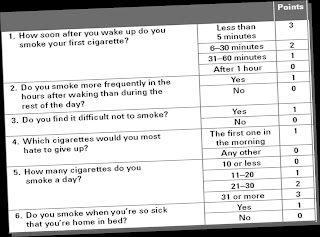| Discrimination of mentally ill persons by hospitals |
We have already stressed the importance of access to healthcare for persons with mental illness. We will now further explore the stereotype of harm in mental illness. The stigma associated with this stereotype has an adverse impact on timely delivery of healthcare to persons with psychiatric illness.
Are mentally ill persons likely to harm other hospital inpatients?
Hospital and healthcare settings have the highest levels workplace related violence across all industry sectors (CDC 2002). The place where patient perpetrated violence is most likely to occur is the Emergency or Casualty department not the wards (Farooq 2009). Patients of all categories mostly attack staff or junior doctors - the ones they are in regular and direct contact with. In most cases violence is perpetrated by arrogant patient attendants not the patients themselves, whatever their diagnosis. For the rest violence is a result of unacceptable staff behaviour, and dissatisfied patients or attendants. It is rare for patients of any diagnosis to physically attack and harm each other in a hospital. Even in acute inpatient psychiatry units violence towards other patients or staff is less than 3% of total incidents of violence (Biancosino 2009). So much for psychiatric illness being “known to cause harm”.Are patients with psychiatric illnesses the only ones that harm other patients? At the height of the swine-flu scare in 2009 no patient suspected of having the disease was denied treatment or admission. Yet swine-fly is known to be highly contagious and lethal. Special protocols and facilities were drawn up and earmarked overnight. So the potential for harm is not the overriding factor in denial of treatment.
Patients with psychiatric illness require minimal investigation, and respond rapidly to cheap and effective medication. Return on investment may be what it is all about. Psychiatrically ill pateintsdo not make much money for a hospital. It is more lucrative to provide skewed facilities for a liver transplant that would require weeks of ICU care, extensive investigation and invasive procedures. It would also make news for all the right reasons.
Mental illness accounts for 80-90% of completed suicides. Serious suicide attempts by poisoning or jumping result in emergency hospital admissions. Treatments would entail stay in the Intensive Care Unit, utilisation of the Operation Theatre, mechanical ventilation, and extensive monitoring and investigations. All this translates into large cash transactions over a short period of time. No hospital administrator would deny admission to these critically ill patients - ethical considerations, policy and stigma not withstanding.
Is it really possible to exclude patients with psychiatric illness from the hospital healthcare system?
The dichotomy between soma and psyche, physical and mental is artificial. This was formally enunciated in Para 1 of the WHOs Alma-Ata declaration (1978) and is the accepted definition of health for medical students since decades. Psychiatric and somatic illnesses coexist with and impact eachother. Ignoring this interaction is adversely affecting the outcomes of chronic illnesses like diabetes, heart disease, cancer and respiratory disease. The World Mental Health Day 2010 document specifically evaluates the evidence and stresses the urgent need to integrate mental heatlhcare for these chronic illnesses which account for 60% of the worlds deaths.Walk into any hospital ICU and you will see at least one delirious patient strapped to the bed with physical restraints. Psychological aspects of critical illness are given the short shrift only because the mindset is one of discrimination and disrespect for the individual. Psychiatric and physical health problems do not exist in isolation. Their physical basis and vice versa cannot be excluded by artificial dichotomies.
Is it desirable to treat persons with mental illness in a general hospital setting?
Integration of mental healthcare delivery with existing facilities is a major thrust of the WHO (2008). Hospitals need to provide an accessible and acceptable location for treatment of acute exacerbations of mental health disorders in the same way that they currently do for physical health disorders. This would also enable access to services for physical health problems that arise during the inpatient stays of persons with mental health problems.Deinstitutionalisation of psychiatric and mental health care has been stressed as a human right since the mid 20th century. A step in this direction for Pune's hospitals would be to draw up and implement guidelines to prevent and manage hospital violence. These guidelines already exist (CDC 2002, OSHA 2004).
References
- Biancosino B, Delmonte S, Grassi L, Santone G, Preti A, Miglio R, de Girolamo G; PROGRES-Acute Group. Violent behavior in acute psychiatric inpatient facilities: a national survey in Italy. J Nerv Ment Dis. 2009 Oct;197(10):772-82.
- CDC. Violence - occupational hazards in hospitals. DHHS (NIOSH) Publication No. 2002–101. April 2002
- J Farooq, A Mustafa, D Singh, GH Yattoo, A Tabish, GJ Qadiri. Violence in hospitals. Journal of the Academy of Hospital Administration, Volume 21, No. 1 & 2 Jan-June & July-December 2009; 16-20
- Occupational and Safety Health Administration. Guidelines for preventing workplace violence for health care and social service workers. 2004. Publication no. OSHA 3148-01R
- Soliman AE, Reza H. Risk factors and correlates of violence among acutely ill adult psychiatric inpatients. Psychiatr Serv. 2001 Jan;52(1):75-80.
- World Federation for Mental Health (WFMH). Mental health and chronic physical illness - the need for continued and integrated care. World mental health day. 10 October 2010.
- World Health Organisation (WHO) Declaration of Alma-Ata. International Conference on Primary Health Care, Alma-Ata, USSR, 6-12 September 1978
- WHO/Wonca. Integrating mental health into primary care: a global perspective. World Health Organisation and World Organization of Family Doctors (Wonca). 2008.

